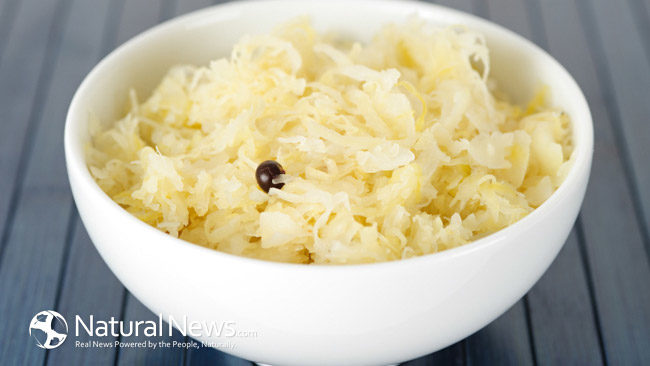Probiotics are all the rage these days and for good reason. It’s been shown time and time again to have a ton of health benefits, mostly stemming from the way it balances and maintains healthy gut flora and the 400+ bacteria types that reside in the intestines. Benefits range from a healthier and more effective digestive tract to a boost in your immune system. But the fact is that most of the time you can get the benefits of probiotics without spending a bunch of money on expensive supplements or fancy kombucha. You can get many of the same benefits by making and consuming your own fermented foods. Probably the easiest one to start your fermenting journey only requires two very basic ingredients you probably have in your kitchen, but are extremely cheap if you don’t: Sauerkraut.
Sauerkraut and Lacto-Fermentation
Lacto-Fermentation is the process that’s used to create sauerkraut. Just as with other fruits and vegetables, sauerkraut has a bacteria on the surface called lactobacillus. This is one of the main bacteria that’s also found in yogurt, as well as a number of other cultured foods that are promoted for their health benefits. This bacteria wards off the development of any harmful bacteria during the fermenting process by converting natural sugars into lactic acid. The lactic acid acts as an all natural preservative.
Making Your Own Sauerkraut
Making your own sauerkraut couldn’t be easier or cheaper. As the title says, you basically only need to simple things: Cabbage and salt. Of course, you’ll need a container of some kind to let it ferment in. A jar will do just fine. You just have to keep in mind that the cabbage needs to stay completely submerged in the liquid during the process, so you’ll need a way to keep weight on it. You can use a smaller jar or cup of some kind with rocks in it to keep on top of the cabbage inside the larger container. Or if you wanna get serious about fermenting, you might want to purchase a fermenting crock.
When fermenting cabbage, it likes to have an attitude and try to rise above the liquid surface. Check it a few times a day to make sure it’s staying put. There’s an ongoing debate on sealing, lids and covers. TheKitchn says to simply cover it with cheese cloth or another type of clean cloth. While others, like FoodRenegade, say to use an air lock lid or at least a screw on lid that minimizes the amount of oxygen that gets in.
Just keep an eye on it to make sure it’s safe and not starting to try to mold. The FoodRenegade link at the bottom has good information and a chart to help you stay safe. In most cases, sauerkraut is hard to ruin though.
Waiting for the Final Product
How long it takes for the fermenting process to complete will depend on how big your batch is. If you’re making around a quart then it’ll probably take a minimum of roughly three days. But if you can, wait a bit longer. The longer it ferments, the more the flavor will intensify. On day three give it a taste and if it’s to your liking, put it in the fridge. If not, check it daily and when it reaches the amount of flavor intensity you like, put it in the fridge.
Gutspace also recommends kefir and yogurt as two other fermented foods to make at home. For yogurt, all you need is plain whole milk yogurt to use as a base and some form of milk that will create the bulk of your homemade yogurt. See how it’s done here. Kefir requires a bit more to get started, but if that’s something you’re interested in then DIYNatural explains it well (found below).
Other Resources:
http://www.ncbi.nlm.nih.gov/pubmed/16696665
http://www.foodrenegade.com/3-biggest-fermenting-mistakes-youre-already-making/





